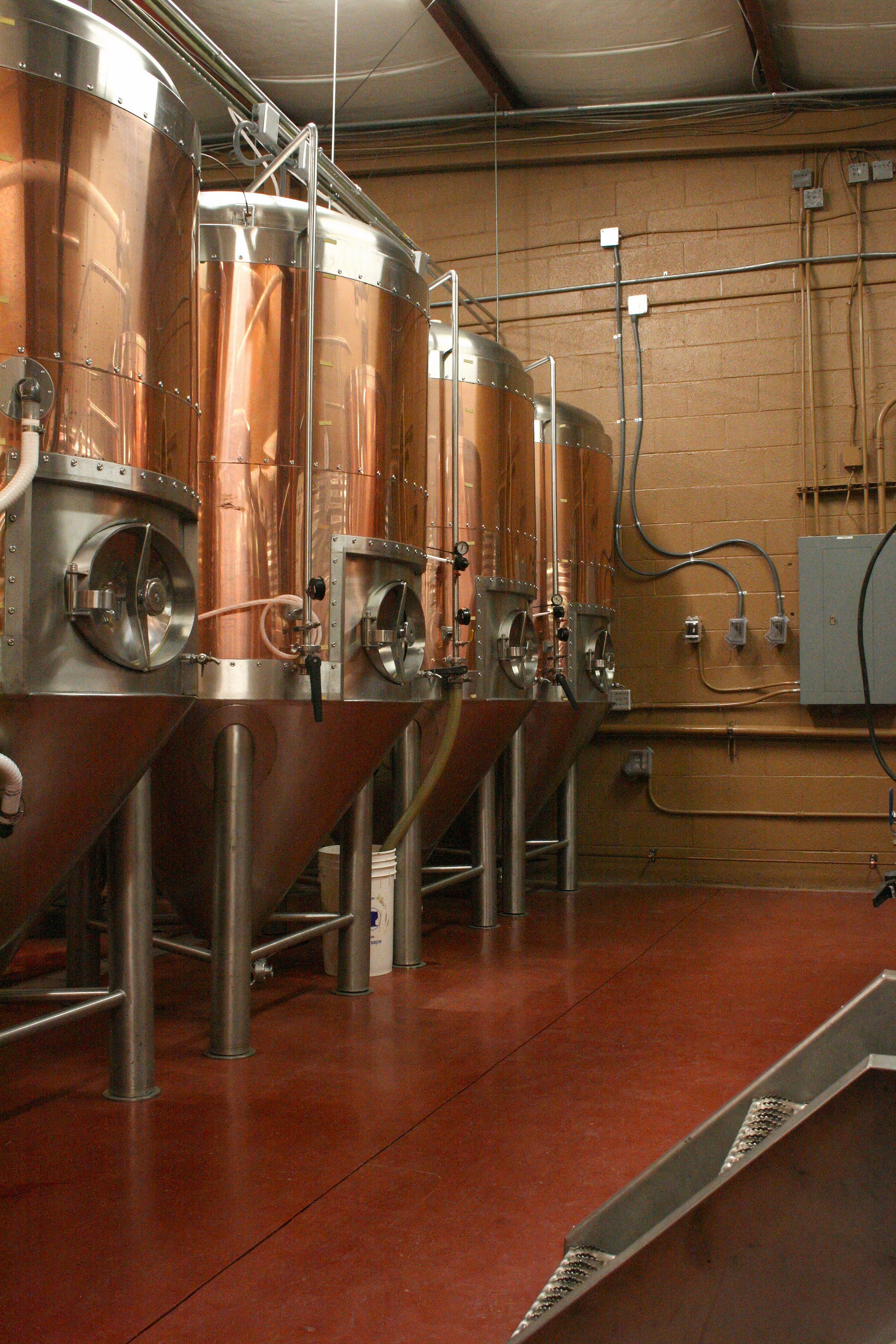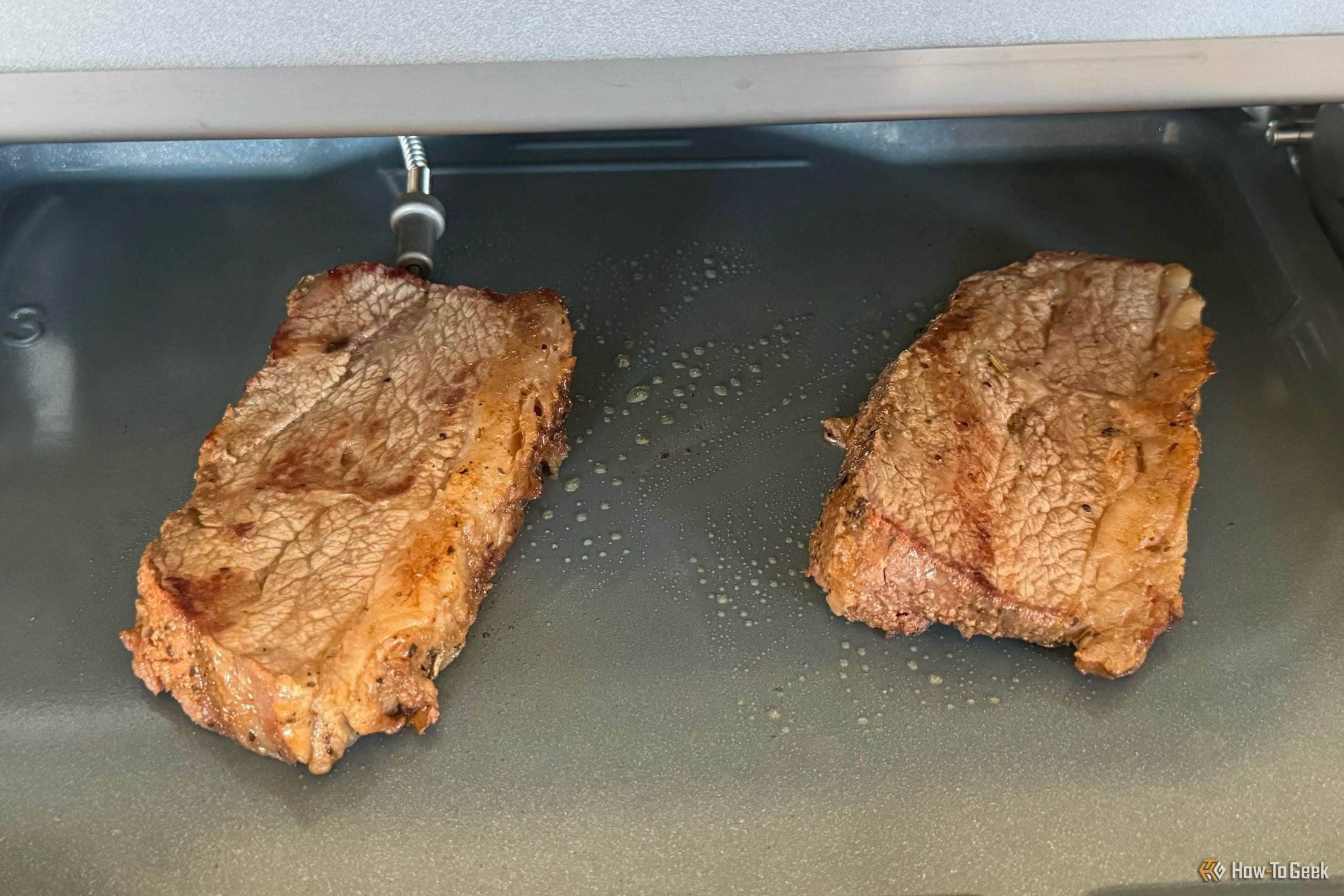Key Takeaways
- Precision fermentation creates animal-free proteins.
- Precision fermentation lowers food production emissions.
- Lab-grown meat faces cost and public perception challenges.
Vegetarianism often receives bad press, but this new technology might make us reconsider that point of view. Precision fermentation has the potential to change how we eat at its most fundamental level and even adapt how we produce that food. Here’s how it works.
What Exactly is Precision Fermentation?
Fermenters at the Lone Rider Brewery, North Carolina
As the name suggests, precision fermentation is a type of brewing, but not the kind you use to make beer or other spirits. Through engineering, brewers can shift the focus of the fermentation to produce fats or proteins. This means we can create the same materials that exist in animals without harming them.
Having enough food to feed the world might not sound like as big a problem as providing power for everyone, but it is an existential problem for many people.
This technology has been used since the 70s to produce insulin. It would have taken over 50,000 pigs to make just one kilogram of the life-saving substance, so precision fermentation took up the slack. These days, however, it’s primarily used to produce collagen, whey, and casein proteins for a ready market.
What’s the Science Behind Precision Fermentation?
Precision fermentation differs from regular fermentation in that it focuses on producing specific molecules, like proteins or enzymes, using engineered microbes. In regular fermentation, microorganisms convert sugars into general products like alcohol or lactic acid. However, precision fermentation modifies the DNA of microorganisms, allowing them to produce targeted compounds, such as animal-free dairy proteins or other specialized ingredients.
Precision fermentation and traditional animal food production create proteins, but they do it in very different ways. In conventional farming, animals are raised to produce meat, milk, or eggs. This process takes time, resources, and land. With precision fermentation, scientists use microbes (like yeast) to create the same proteins without animals. By programming these microbes to make specific proteins, food can be produced faster and with fewer environmental resources, such as water and land.
From the Lab to the Table
One of conventional farming’s biggest drawbacks is the sheer amount of land required to feed people. The world currently uses approximately half of the total habitable land space for agriculture. We could continue on this path, but with each production season, the land becomes less usable.
That’s why plant-based meat has become a significant development for feeding the world.
We’ve already heard about Beyond Meat, which makes plant-based meat from peas, beans, and other ingredients. Precision fermentation is very different, however, since it creates meat using reprogrammed microbes. Companies like Perfect Day create animal-free whey, while New Culture makes dairy proteins for cheese. These proteins are grown in fermentation tanks, mimicking traditional flavors and textures, but without needing animals.
Is conventional farming so bad, though? Current reports state that livestock farming is responsible for massive greenhouse gas emissions. Cows alone produce almost as much methane emissions as the entire United States! However, as someone who appreciates a good steak as much as the other guy, giving up beef is a step too far.
Precision fermentation dramatically reduces the carbon footprint of food production. Precision fermentation generates 80-90% less CO2 than animal farming, eliminating the need for animal feed, grazing land, and energy-intensive farming practices. This streamlined process cuts emissions across the entire supply chain, from production to transportation, making it a cleaner alternative for producing proteins and other essential nutrients without sacrificing food quality.
Would You Eat Lab-Grown Meat?
Public perception is one of the most significant hurdles this sort of food production has faced. Surveys suggest that younger, environmentally conscious consumers are more likely to embrace lab-grown meat due to its potential to reduce greenhouse gas emissions, land use, and animal suffering. However, skepticism still exists. Concerns about food safety, unnaturalness, and the idea of eating something “grown in a lab” make some hesitant to try these alternatives.
Taste and price are also significant factors shaping public opinion. While some lab-grown meat products have received praise for closely mimicking the taste and texture of real meat, others have not met consumers’ expectations. Additionally, lab-grown meat is still more expensive than its conventional counterparts, which makes it less accessible to the average person. As production scales up and costs decrease, these perceptions may shift, but for now, price remains a barrier to widespread acceptance.
Regulatory frameworks have been working to get lab-grown meat onto the market, but there are still a lot of delays. The FDA gave its first approval to cultured meat in 2022, allowing it to enter the U.S. market. However, navigating these approvals remains complex, as regulatory frameworks are still catching up with this rapidly advancing industry. Different regions have varying standards, with some countries requiring more rigorous testing for safety, labeling, and consumer transparency.
Making Lab-Grown Meat More Attractive Is an Uphill Battle
For lab-grown meat to become widely accepted, it must be affordable and readily available. Right now, the cost is still high, but companies are working on reducing production expenses as technology improves. Once prices drop, lab-grown meat will be easier to add to grocery stores and restaurants. Partnerships with food suppliers and retailers will help get these products on shelves, making them as convenient to buy as traditional meat.
Marketing and education will be vital in changing people’s minds about lab-grown meat. Some consumers worry about safety or feel it’s unnatural. Clever marketing could focus on the environmental benefits, health perks, and taste. Showing how lab-grown meat is made clearly and simply might help people feel more comfortable.
Lab-grown meat is also an ethical choice. Many people find the idea of reducing animal slaughter appealing. It could also help with food supply issues in areas where raising livestock is complex. Still, lab-grown meat has to fit with local food traditions. Respecting these customs while introducing new food options will require careful planning. It’s important to balance innovation with respect for cultural eating habits.
Is the Future Vegetarian?
The timeline for adopting this technology in mainstream production varies. Some sources claim that lab-grown meat may reach price parity with conventionally farmed meat around 2030. Precision fermentation has the potential to significantly change this timeline. This technology has already been instrumental in the pharmaceutical industry. With approval for lab-grown meat setting a precedent, we may become vegetarians before we even know it.







